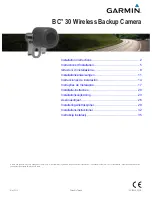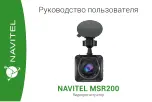
b y m i s c h a k o n i n g
kodak.3106.net >
index
manuals
information
T h e R e t i n e t t e G u i d e
These web-pages have been scanned and converted from a photocopy of the "Focal
Press" publication "Retinette Guide", 1965 edition. There may be reference to "current"
and "discontinued" models. Obviously all Retinette cameras are now long discontinued,
but For ease of editing if nothing else, all the original text has been retained.
The original book was divided into two sections, effectively an overview and a "green
pages" section covering specific models in more detail. I've not bothered with a green
background to these pages, but hopefully I will have included links where appropriate to
the relevant text.
Table of Contents
The Retinettes
Handling the Retinettes
Retinette Films
The Technique of Focus
Close-Up Work with the Retinette
The Technique of Exposure
Flash with the Retinettes
The Retinettes
The Retinettes are miniature cameras producing a negative 1 in. x 1½ in. (24 x 36 mm.) on 35 mm. film. A single
load of film in a standard cassette will take up to 36 exposures. The film can be loaded and unloaded in daylight. The
Retinettes are snapshot cameras for all general photography, especially candid action and other life subjects.
The Retinettes owe their mechanical qualities to the fact that they use the same die-cast body unit and transport
mechanism as their more expensive sister, the Retina series of cameras. The body has a hinged-on back, the lock of
which is covered by a protecting safety latch to prevent accidental opening of the camera. The body itself is rigid
(bellowless), the lens and shutter unit being mounted on the front panel.
The Retinette film track is specially designed to keep the film really flat without risk of scratching the emulsion. The
film is wound on by a transport lever, which with one full swing advances the film to the next frame, and also moves
the film counter and re-tensions the shutter. That system provides an efficient double exposure lock, which can,
however, be circumvented by special deliberate procedures. The film lock, which arrests the film after each frame,
can also be released for advancing the film without exposing it (e.g., when reloading a partly-used film).
The viewfinder in the latest models of all Retinettes is a large bright line-frame reflecting eye-level finder, showing
the image almost in natural size. Previous models of the Retinettes have an optical direct vision finder, showing the
image about three-quarters natural size. The finder is placed centrally above the lens, thus avoiding lateral parallax
errors.
The Reomar f2.8 lens (made by Schneider and by Rodenstock) is fitted on the latest Retinette IA, IB, II, IIA and IIB
cameras, while the Retinette I and earlier IA have an f3.5 Reomar. It is a 3-element triplet with a focal length of 1¾
in. (45 mm.), covering an angle of 51°. It has a front cell focusing mount which can be focused down to 3½ ft.
Definition and colour correction are very good. The optimum performance is reached at f6.3. A depth of field
indicator is fitted.
EARLY RETINETTE CONTROLS
Lens: L1, lens; L4, aperture speed index. Focusing: F1,
focusing mount; F2, distance scale. Shutter: S2, shutter
release; S4, shutter speed scale; S6, light value control;
S8, shutter speed ring; S9, flash socket; S10, cable
release socket (in release button); S13, self-timer lever.


































